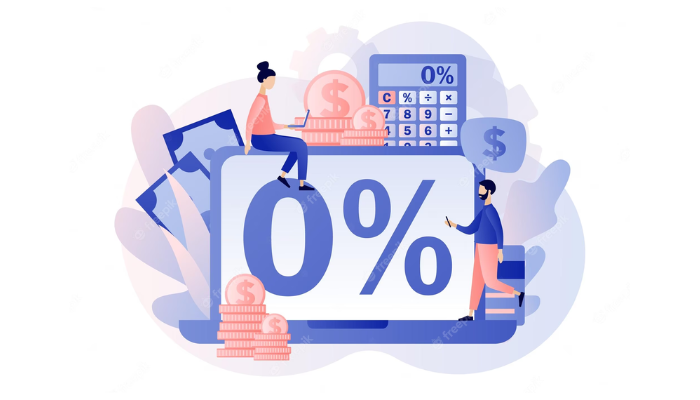Interest-free loans are a great option for those looking to borrow money without the burden of high interest rates. They allow you to repay only what you borrow, making them a more affordable choice.
With traditional loans often coming with hefty interest charges, interest-free loans offer a refreshing alternative for anyone looking to manage their finances better.
Want to learn more about how interest-free loans work and where you can find them in South Africa? Keep reading!
What Are Interest-Free Loans?
An interest-free loan is exactly what it sounds like – a loan that doesn’t charge any interest over its term. Unlike conventional loans, where interest is added to the amount borrowed, interest-free loans allow borrowers to repay only the principal amount they borrow.
This makes it an appealing option for individuals who need financial assistance but want to avoid the extra costs that come with traditional loans.
In South Africa, interest-free loans are not as widely available as their interest-bearing counterparts, but they do exist in certain circumstances. Understanding the types of interest-free loans and where to find them can help individuals make informed decisions about their borrowing options.
Where Can You Find Interest-Free Loans in South Africa?
Although they are not common, there are specific organizations and schemes that provide interest-free loans in South Africa. Here are some places to consider:
-
Government Initiatives
The South African government, through various programs, may offer interest-free loans to help individuals or businesses. These loans typically have very specific eligibility requirements, and the application process can be competitive. Examples include loans for small businesses, students, or individuals in specific communities. It’s worth researching government portals to see if you qualify for any of these initiatives. -
Non-Profit Organizations
Non-profit organizations (NPOs) sometimes offer interest-free loans as part of their financial assistance programs. These loans are often provided to individuals facing financial hardships, those in rural areas, or people who are unable to access traditional bank loans. Many NPOs work to alleviate poverty and support community development, which includes offering interest-free loans to empower individuals to improve their financial situations. -
Peer-to-Peer Lending
Peer-to-peer (P2P) lending platforms have gained popularity in South Africa. These platforms connect borrowers with individual lenders, and in some cases, they offer interest-free loans. While this is a relatively new concept in South Africa, P2P lending has been growing steadily, and some platforms offer interest-free loan options as a way to attract borrowers who are wary of high-interest charges. -
Religious Institutions and Charitable Organizations
Religious institutions such as churches, mosques, and synagogues sometimes offer interest-free loans to their congregations or community members. These loans are often given as a form of support in times of need and are designed to help individuals who are struggling financially. If you are a member of a religious community, it’s worth inquiring about any financial assistance programs that may offer interest-free loans.
The Benefits of Interest-Free Loans
There are many benefits to opting for interest-free loans, especially in South Africa, where interest rates can be high. Here are some of the key advantages:
-
Lower Repayment Burden
The most obvious benefit of an interest-free loan is the lower overall repayment amount. Without the added interest charges, borrowers only need to repay the principal amount, making the loan more affordable and easier to manage. -
No Hidden Fees
With traditional loans, interest charges and hidden fees can quickly add up, leading to higher repayments than originally anticipated. Interest-free loans typically come with fewer fees, making it easier for borrowers to understand exactly what they owe and how much they need to repay. -
Easier to Budget
When you borrow money through a conventional loan, the interest charges can fluctuate, making it difficult to budget. Interest-free loans provide a clear and fixed repayment schedule, helping borrowers to plan their finances with certainty. -
Debt-Free Faster
Without interest accumulating over time, individuals can pay off their debt faster, freeing up funds for other financial goals. This is particularly helpful for people who want to avoid long-term debt and achieve financial stability sooner.
Alternatives to Interest-Free Loans
While interest-free loans are a great option, they are not always easy to find or available to everyone. Fortunately, there are several alternatives that can help individuals in South Africa borrow money at lower interest rates. Here are some alternatives worth considering:
-
Personal Loans with Low Interest Rates
Many banks and financial institutions in South Africa offer personal loans with relatively low interest rates. While these loans do charge interest, the rates are much more manageable compared to traditional credit cards or payday loans. It’s important to compare interest rates and terms from different lenders to find the most affordable option. -
Microfinance Loans
Microfinance institutions offer small loans to individuals who may not qualify for traditional bank loans. These loans often come with lower interest rates than payday loans or credit cards, and the repayment terms are typically more flexible. If you are looking for an affordable alternative to interest-free loans, microfinance may be a good option to explore. -
Credit Unions
Credit unions are member-owned financial institutions that often offer personal loans at lower interest rates than commercial banks. Many credit unions in South Africa provide loans to individuals who are members of the organization, and the terms may be more favorable than those offered by traditional banks. -
Buy Now, Pay Later (BNPL) Services
Some retail companies in South Africa offer buy now, pay later (BNPL) services that allow consumers to purchase products and pay for them in installments, often with no interest if paid off within a set period. While these services are not technically loans, they provide an interest-free way to finance purchases, making them an attractive alternative for small, short-term financial needs. -
Family and Friends
One of the simplest alternatives to interest-free loans is borrowing money from family or friends. If you have a strong support network, you may be able to borrow money without the interest or fees associated with traditional loans. However, it’s important to approach these arrangements with care, as lending money to loved ones can sometimes lead to strained relationships.
Considerations Before Applying for an Interest-Free Loan
Before applying for an interest-free loan, it’s important to understand the terms and conditions associated with the loan. Here are a few things to keep in mind:
-
Eligibility Requirements
Make sure you meet all the eligibility requirements for the loan. Some interest-free loans may have specific criteria, such as income limits, credit scores, or community affiliation. -
Repayment Terms
Understand the repayment schedule and any penalties for late payments. Even though the loan is interest-free, there may still be consequences if you fail to repay on time. -
Loan Amount
Be clear about the amount of money you can borrow and the amount you are expected to repay. Some interest-free loans may have limits on the amount you can borrow.
Conclusion
Interest-free loans provide an excellent alternative for individuals in South Africa who need financial assistance but want to avoid the added burden of interest payments.
While they may not be as common as traditional loans, they can be found through government programs, non-profits, peer-to-peer lending platforms, and religious institutions.
For those who cannot access these loans, there are several other financing options available, including personal loans with lower interest rates and microfinance loans.
Before applying for any loan, it’s essential to understand the terms and ensure that you can comfortably meet the repayment schedule. With the right approach, borrowing money can be a more manageable and affordable process.





